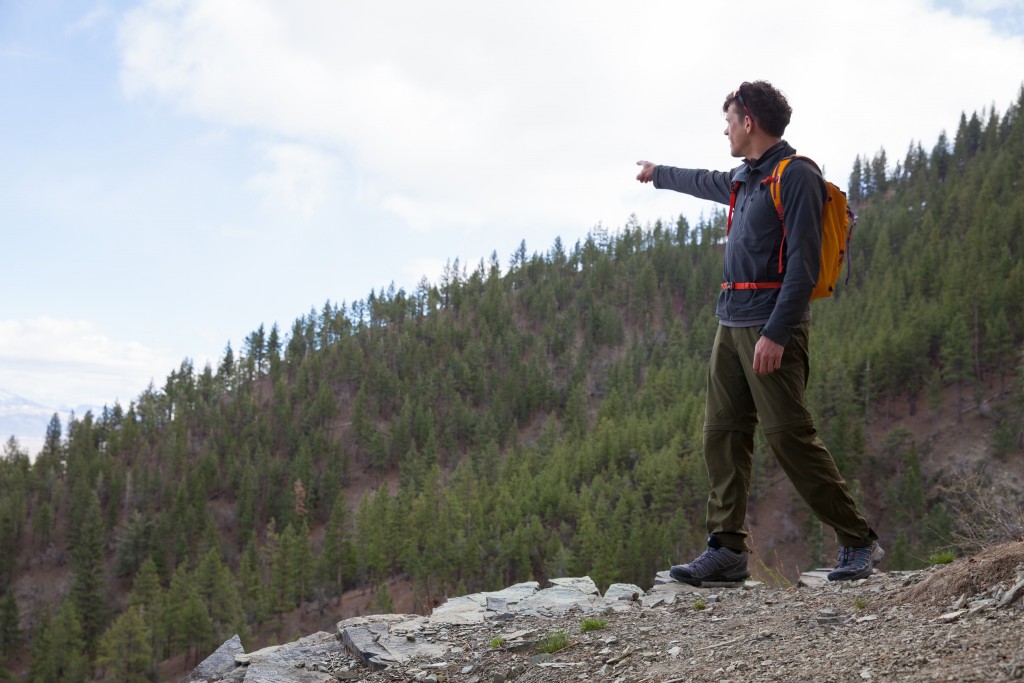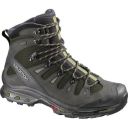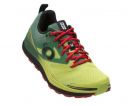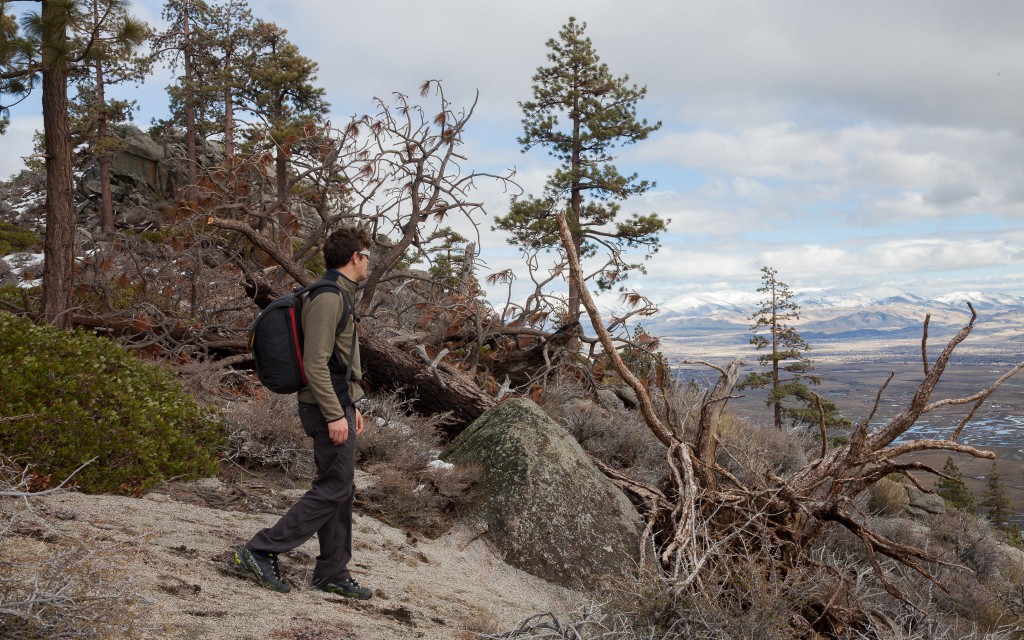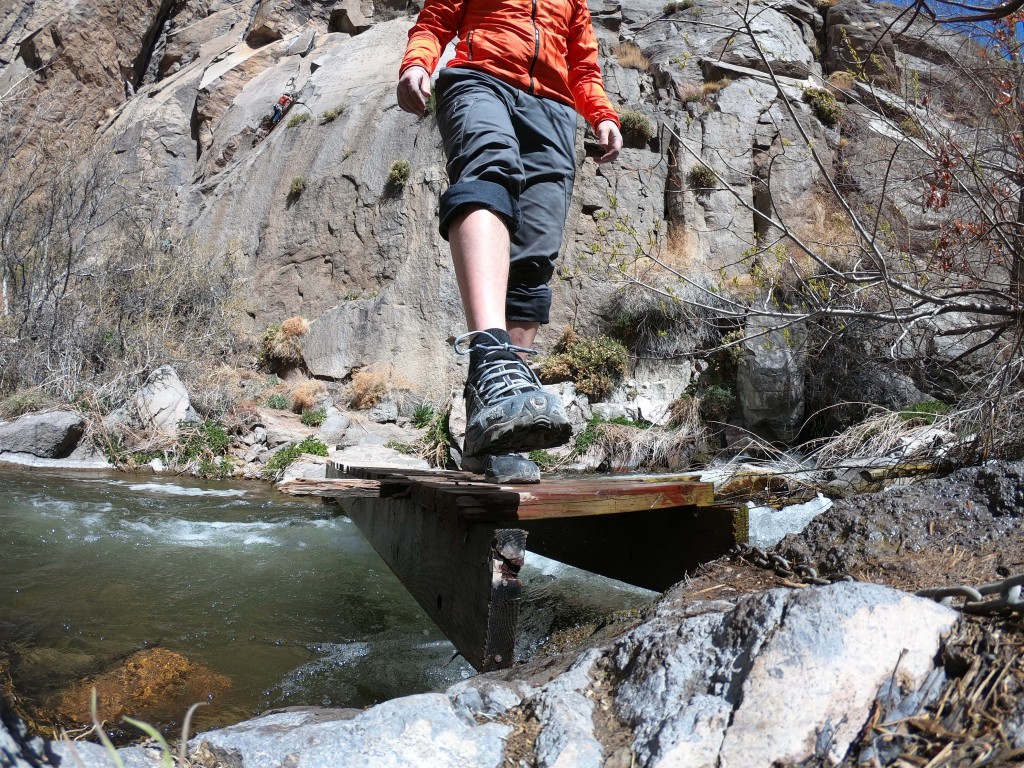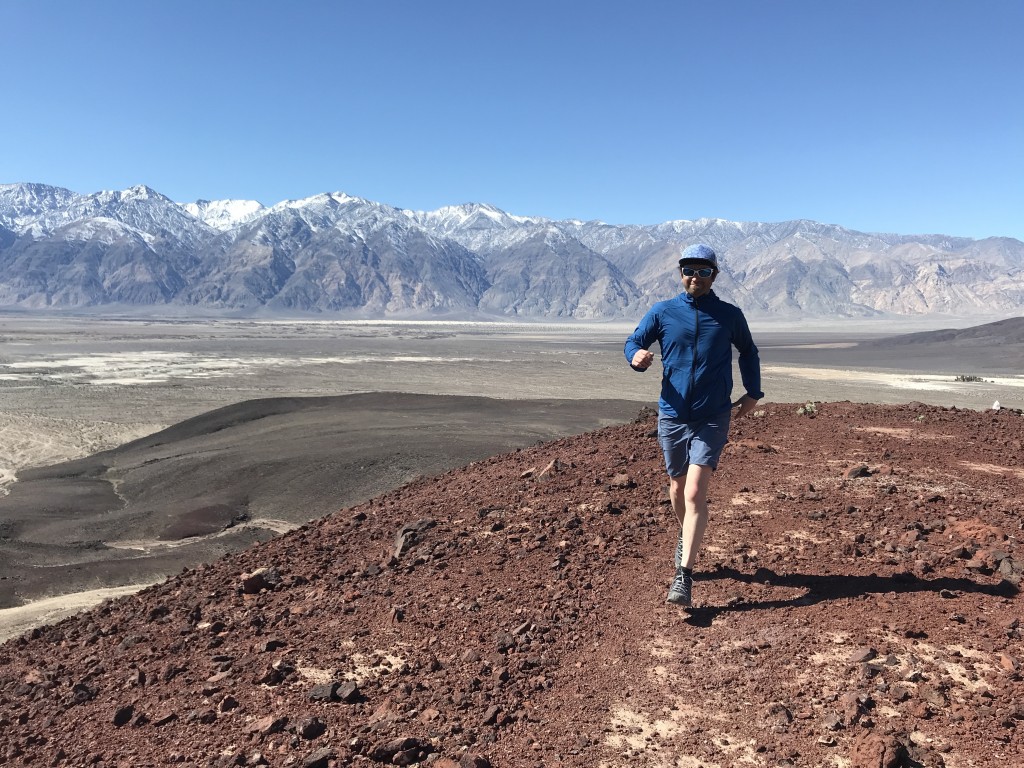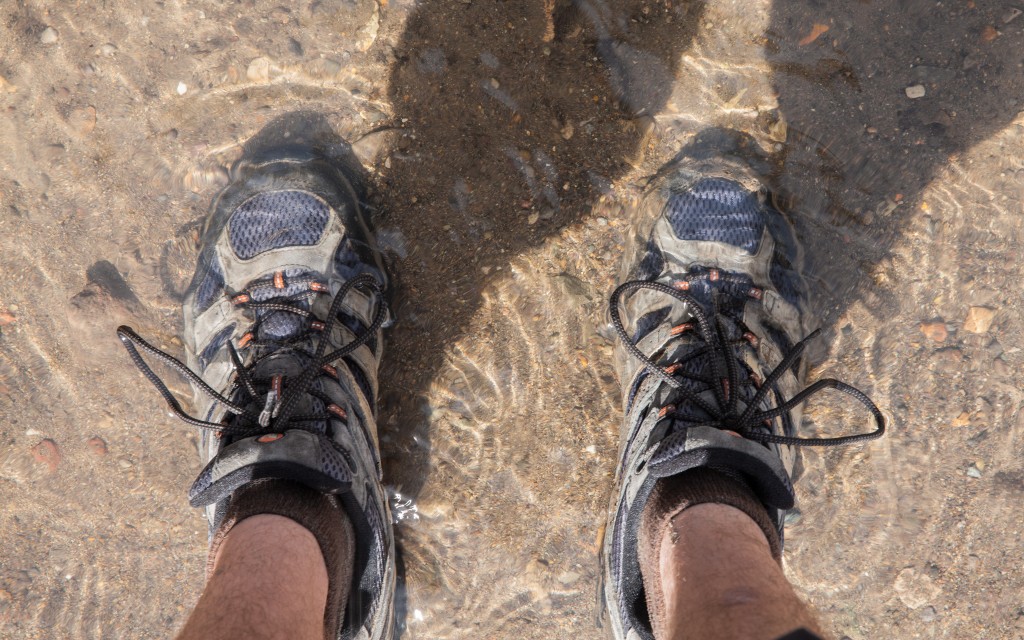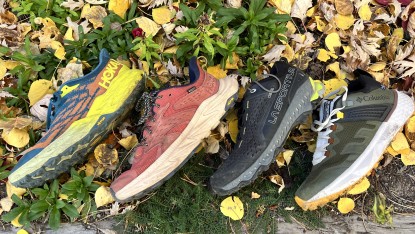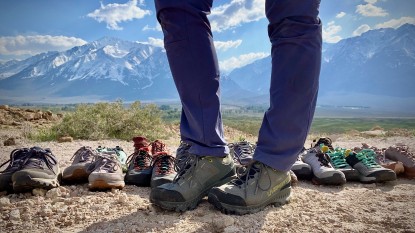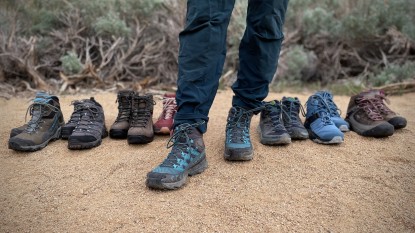Hiking is luckily relatively easy to get into. It is not a sport that has a high barrier to entry and requires a ton of new gear to purchase, at least for getting out on a day hike. Hiking shoes are a top priority. Try hiking with a pair that are either way too flimsy or way to sturdy for your objective and you could be left with sore feet, inflamed tendons, blisters, or worse! In our best men's hiking shoe review, we compare the comfort, support, weight, and traction offered by the most popular models on the trails today. This article helps you identify the criteria that are most important to you so that you can find a model that fits your needs best. And don't forget our mega-list of the hiking gear to learn more.
Types of Hiking Footwear
First, let's take a look at the types of hiking footwear available. Each is an appropriate choice for hiking and light backpacking, depending on your experience and objectives. After detailing the advantages of each, we'll discuss two basic categories of hiking shoes and their attributes. And finally, we'll guide you through the fitting and sizing for your unique foot.
Hiking Boots
Trail Runners
Hiking Shoes
Shoe vs. Boot
A common question for beginner hikers is: Should I choose a low-cut shoe or mid-height boot? A pair of hiking boots often weigh several ounces to a pound more than shoes, but the weight is one of several considerations. The conditions, distances to cover, and personal ankle and foot strength are all important factors. Boots provide more protection from mud, snow, and water, and they are a necessity for rough terrain with heavy loads.
Best Uses for Hiking Shoes
"Hiking" covers a whole range of fun-on-your-feet adventures, including day hikes requiring minimum essentials. These could be strolls on maintained trails or many miles covered at speed in rough terrain and everything in between. Hiking also encompasses short backpacking trips with light or medium loads or long fastpacking trips where paring down the weight becomes a priority. Our best walking shoes article has some great options for folks who mostly split their time between pavement and easy trails.
A Note on Pack Weight
We often refer to light, medium, and heavy loads for hiking and backpacking. Light refers to everything up to 20 lbs. This covers day hikers and some of the ultralight backpacker and thru-hiker folks. By medium loads, we mean 20-35 lbs. It's a noticeable amount of weight to carry, and footwear offering foot support is important. Anything more than 35 pounds is heavy. Most folks want boots for these loads.
Day hiking
Day hiking is simple. You carry nothing more than the essentials you need for the trail you've selected, and you go out and hike. As long as you make it back by dark, you've just gone day hiking. Since you need to carry little besides a small daypack with food, water, sunscreen, and a map, you can get away with much lighter footwear. Every shoe that we have featured in this review is appropriate for day hiking use, although a few models that don't have a waterproof liner may not be as great in the Pacific Northwest or other wet regions.
Fast Hiking
Fast hiking, or fastpacking as it is increasingly becoming known, is just that: tackling a trail in a section or its entirety at a faster than average pace. The goal is putting down as many miles as possible each day, and limit pack weight in order to achieve this. While this is more of a speed walking effort than a running event, a brisk walking pace often leads to jogging on the flats, and having a nimble and light shoe that allows for this kind of movement is required. Fastpackers typically choose between the support of hiking shoes or the lightweight cushioning of trail runners.
Backpacking with Light or Medium Loads
Hiking shoes are perfect for carrying medium and lighter packs on maintained trails. Hikers that occasionally head out backpacking for a few nights pack light and the support and durability offered by a low-cut model is a perfect choice. Experienced backpackers with strong ankles cruise through rough terrain in shoes designed for hiking as well and find medium pack weights reasonable with the support provided.
Thru-hiking
Thru-hiking describes hiking one of the long-distance point-to-point trails such as the Pacific Crest Trail, the Appalachian Trail, or the Continental Divide, to name a few. These are massive undertakings and those who set off to complete these challenges seek lightweight and comfort above all else. Most of the time you'll see these hikers wearing trail running shoes, though the addition of some great new models that offer. Other hikers choose not to set off at such a breakneck pace and align themselves less with fastpackers than with backpackers. These folks, who are likely carrying a bit more weight and are not doing as many miles per day, can benefit from the extra support that a midweight hiking shoe can provide.
Where Do Your Preferences Lie?
So you've decided a low-cut hiking shoe meets your needs best. Which one should you purchase? Because these products fit into a niche between hiking boots and trail running shoes, they can be divided into two groups that resemble one or the other. Several models we reviewed have mid-cut versions that resemble hiking boots, yet the low-cut versions are often closer to trail runners.
First, we have models that resemble hiking boots. Some of the shoes we tested are designed and constructed similarly to hiking boots. As we described above, boots have a substantial midsole and a full-length shank, which support the foot under loads and provide torsional stability. These shoes are made for hiking without the expectation of picking up the pace and running flat or downhill sections. Many of these models have a substantial shank between the midsole and outsole.
Second, we have models that resemble a trail running shoe. The fit, amount of heel lift above the forefoot, and sole are most similar to traditional trail runners. Folks who come from a running background find these shoes fit and feel familiar. These shoes are lightweight in general. The categories we use for footwear take a continuum of features, weight, and performance into consideration, but there is an overlap between these types.
Support and Weight
How much support you need depends on how many miles you hike, how smooth or rough the terrain is, and how much weight you are carrying. The further your adventures take you, the more you'll benefit from a shoe with more support and torsional stability over rough trails or off-trail terrain. Stiffer, more supportive shoes also reduce foot fatigue when carrying a pack, and the more you carry, the more support your foot needs.
Light is right when hiking lots of miles. Modern materials and construction techniques have worked wonders in footwear design, and today's best shoes for hiking deliver support, comfort, and performance at low weights compared to a few years ago. When we reviewed this type of shoe in 2015, the lightest was 2.1 lbs. In 2019, the lightest model reviewed weighs 1.7 pounds. These shoes are dropping ounces as a trend. Our advice is to choose the lightest footwear that meets your needs for support and expectations of durability.
Waterproof Membrane or No?
We are all aiming to keep our feet as dry as possible when hiking. Dry feet are cooler when it's hot out, and warmer when it's cold. Wet skin is also a major cause of blisters, which ruin a trip. Waterproof breathable membranes keep your feet from getting soaked while hiking through shallow puddles, small streams, mud, and heavy dew. Keep in mind that non-waterproof shoes are far more breathable than their waterproof membrane counterparts. Many hikers have relayed to us the disadvantage of waterproof membranes when hiking in hot weather. If you mostly hike on dry trails or in hot weather, choose a shoe available without a membrane and enjoy the better breathability. Waterproof membranes add warmth to a shoe and provide performance for cold-weather hiking. (If you need a shoe that's made to get wet, check out our men's water shoe review.)
Fitting and Finding Your Size
The comfort and performance of footwear are largely determined by how well the shoes fit your feet. Once you've narrowed down your search, trying on many pairs of similar shoes to find the model and size that best fits your foot is ideal. Some manufacturers' products are known to fit low volume or narrow feet best. La Sportiva has this reputation. Others tend to fit wide feet well, and some manufacturers offer their shoes with width options.
If you have the opportunity, visit a local retailer and try shoes on in person. More than one person has ended up with the wrong size shoe by arriving with a pair of socks that are thinner than the ones they plan on hiking with, leading to a pair of shoes that are too tight with heavier socks. Another tip is to show up for a fitting in the evening after you have been standing on your feet all day when they are the most swollen. Try shoes on in the morning and you might end up in pair that is too tight as well.
Finding a well-fitting shoe for your particular foot is even more important for hiking shoes than boots. A boot's higher ankle collars provide more lacing adjustment that is used to hold the foot in place in the footbed. A narrow foot in a wide shoe is more difficult to secure than in a wide boot. If you are new to shoes for the outdoors, a 1/2 or full size larger than casual shoes is a good place to start. The Brannock device, which gives both a length and width measurement of your foot when used by an experienced shoe fitter, provides valuable measurements to speed upsizing.
You want to make sure that the shoe and size you choose secure your foot well so that there is no sliding of the heel up and down in the shoe. To avoid blisters, the tips of your toes should never touch the front of your shoe. Loosen the laces of the shoe, slide your foot all the way to the front. There should be about ½ inch of space, or your pinky finger width, behind your heel. When lacing the shoe up, slide your heel into the back of the shoe, and lace it up with even tension across your forefoot. Take a lap around the store, walk on some stairs or that fancy ramp some stores have, and note the feel and how well your heel stays put in the back of the shoe.
As the final decision looms, many folks find themselves torn between two sizes. Our feet swell a little bit when we're out hiking, more so on long days. A thicker sock or substantial insole makes a slightly too big shoe fit well. But a shoe that is too small is too small. Pick the larger size if you're torn between two. Synthetic materials do not stretch as much as natural ones, so while a leather boot might soften and give the toe box a bit of room over time, most modern footwear will not.
Fine Tuning the Fit
A little fine-tuning does wonders to achieve the perfect fit. Using a little thicker sock helps folks with low volume feet get a snug fit without having to over-tighten the laces. If you're fitting a shoe you quite like, but have a little bit of heel slip, try a bit thicker sock. Or try a thinner sock with a half-size smaller. Compare one combo on your right and one on your left as you walk around.
Shoes that have a traditional eyelet, or two close together, at the top of the lacing system provide you with the flexibility to experiment with lacing. With these traditional, through-the-shoe's upper eyelets, you can pass the lace through either from the inside or outside of the upper. Passing the lace from the outside to the inside of the upper snugs the ankle cuff a bit tighter. Two upper eyes allow you to use one or both.
Lots of hikers replace the stock insole, either from the start or as it begins to wear out, which is often long before the shoe itself is ready for retirement. Thicker or thinner insoles (don't be afraid to mix and match from your current shoes) help you adjust the fit of a shoe.


